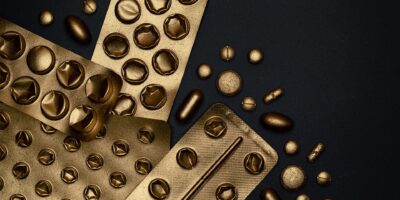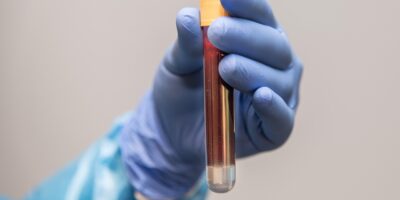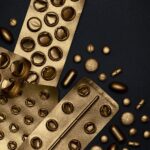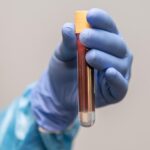Between the heartfelt survivor stories and pink ribbons, an unfortunate truth still looms over many; the multitude of limitations of the treatments for breast cancer. However, recent developments from a team of researchers, provide a glimmer of hope to the strong men and women fighting this disease.
Breast cancer is a prevalent issue in both males and females – occurring when a malignant tumour develops in the breast tissue. Despite the awareness surrounding this disease and the several treatment options, 1 in 8 women will be diagnosed with breast cancer in Canada, and 1 in 34 women will die from it1.
In this quest to improve breast cancer treatment, the spotlight has turned to usage of Silver, specifically the silver nanoparticles AgNPs. As of late, AgNPs have been a topic of interest for targeting tumours, due to their unique chemical, physical, biological, and optical properties. However, a significant drawback in their use stems from the fact that they can be toxic, having the potential to kill off the healthy cells along with the cancerous ones. Therefore, it is necessary to modify AgNPs to be homogenous in size, morphology, and surface characteristics, in order to minimise these toxic effects. This controlled modification can be done, through the utilisation of appropriate reducing agents (NaBH4), effective capping agents (PVP or BSA), or encapsulating them with liposomes. The objective of this study was to create surface-modified AgNPs, as well as liposomes and evaluate their cytotoxic effects on the MCF-7 breast cancer cell line.
The researchers cultivated the MCF-7 human breast cancer cells in a high glucose media and introduced treatments after the cells were incubated and plated. This approach of culturing of MCF-7 cells allowed the researchers to isolate and investigate the impacts of their treatment. To test whether cells were still viable post-treatment, 3-(4,5-dimethylthiazol-2-yl)-2,5-diphenyl-2H-tetrazolium bromide (MTT) assay was used.
Several chemical reduction methods, such as sodium borohydride, trisodium citrate, and silver nitrate, were used to produce AgNPs in this study. However, a chemical reduction of silver nitrate and modified sodium borohydride (NaBH4 ) was determined to be the most effective. The AgNPs with NaBH4 were the smallest in size, uniformly dispersed, and maintained high stability.
To characterise the AgNPs post-treatment several techniques were used. Firstly, in order to confirm that AgNPs were formed and assess the impact of the treatments (PVP, BSA, and Liposomes), UV-Visible Spectrophotometry was employed. Particle Size Distribution and Zeta Potential Analysis was performed, in addition to Scanning Electron Microscopy to determine size and morphology of AgNPs. Fluorescence analysis was also conducted to ensure that BSA was truly incorporated onto the AgNP’s surface.
Polyvinylpyrrolidone (PVP) was used as a capping agent to modify the AgNP’s surface, facilitating better control of the size of the particles, and preventing aggregation. The synthesising of PVP-AgNPs produced lower levels of cytotoxicity, and an increase in cell viability when PVP is given in low concentrations. However, when a higher concentration of PVP is administered, a higher cytotoxic effect is examined on MCF-7 breast cancer cells, as well as a higher chance of adverse effects on healthy cells.
Bovine Serum Albumin (BSA) was also used as a capping agent. It was synthesised with AgNPs in order to improve stability, due to the formation of a protective shell around the AgNPs. BSA-AgNPs indicated that the levels of cytotoxicity were dose-dependent. It should be noted that BSA enhances nucleophilic distribution, which ultimately impacts the cytotoxicity. Despite having nucleophilic dissolution related unfavourable reactions, such as increased cytotoxicity, encapsulating AgNPs in lipid bilayers emerged as an intriguing approach to minimise these effects. Further, BSA-AgNPs were determined to be a more effective surface modification than PVP because of the high levels of cytotoxicity on MCF-7 given with low concentrations.
Through the liposome encapsulation of AgNPs the adverse effects on healthy cells was reduced, and allowed for specific targeting of cancer cells. Liposomal-AgNP produced lower cytotoxicity than the AgNPs that were unmodified, however still caused an increase in cytotoxicity at higher concentrations. Additionally, in previous studies, the cytotoxicity of AgNPs was proposed to be due to its ionisation. By slowing the AgNPs ionisation rate, it may induce lower levels of cytotoxicity. Liposomal-AgNPs have a slower ionisation rate, which can contribute to the reduction of cytotoxicity. This was specifically seen in BSA-AgNP, as liposome encapsulation mitigated the adverse effects created by the nucleophilic dissolution.
The potential of surface-modified AgNPs and their encapsulation in liposomes offers a promising direction for addressing the limitations of breast cancer cell treatment. These researchers’ approach offers hope for more effective, targeted, and less toxic cancer therapies. As research progresses, we can look forward to more targeted and less invasive treatments, offering more than just a glimmer of hope in the fight against breast cancer.
(1) Canada, P. H. A. of. (2023, September 25). Breast Cancer in Canada. Government of Canada. https://www.canada.ca/en/public-health/services/publications/diseases-conditions/breast-cancer.html
(2) Moors, E.; Sharma, V.; Tian, F.; Javed, B. Surface-Modified Silver Nanoparticles and Their Encapsulation in Liposomes Can Treat MCF-7 Breast Cancer Cells. J. Funct. Biomater. 2023, 14, 509. https://doi.org/10.3390/ jfb14100509









